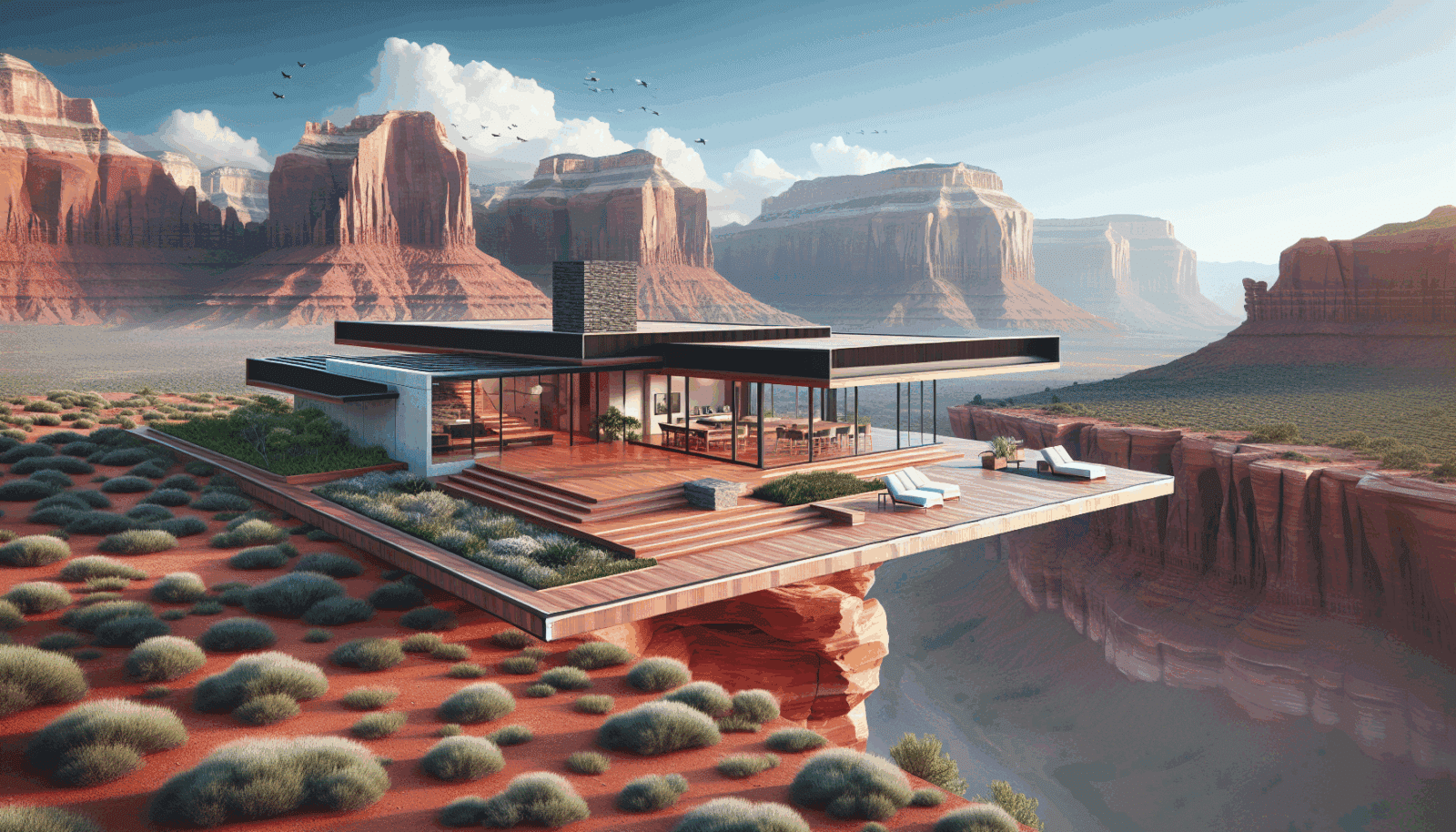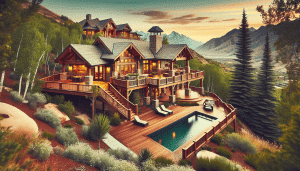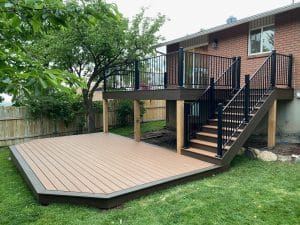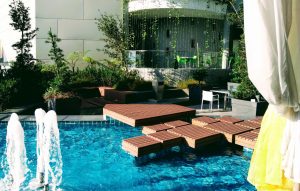Choosing the right Materials for your deck isn’t just a matter of taste; it’s about making an investment that enhances and protects your home. At Utah Deck Company, we understand the complexities homeowners face when deciding which deck materials will best suit their needs. That’s why we’ve crafted this comprehensive guide comparing the latest in deck materials. Whether you’re looking to install a new deck or upgrade an existing one, we’re here to provide valuable insights and considerations to help guide your selection process.
Contents
- 1 Composite Decking: A Popular Choice
- 2 Natural Wood Decking: Timeless Beauty
- 3 PVC Decking: Low Maintenance
- 4 Aluminum Decking: Durability at its Best
- 5 Bamboo Decking: An Eco-Friendly Alternative
- 6 Considerations for Your Climate
- 7 Installation Costs and Considerations
- 8 Maintenance and Lifespan
- 9 Sustainability: Thinking Green
- 10 Choosing the Right Material for Your Needs
Composite Decking: A Popular Choice
Composite decking has gained immense popularity, and for good reason. Made from a blend of Wood fibers and plastic, it offers a number of benefits that cater to modern homeowners. First, its durability is unmatched, resisting the wear and tear of harsh weather. This means less maintenance and more relaxation. Furthermore, the aesthetic appeal of composite decking is undeniable. With various color and texture options, it’s easier than ever to match your deck to your home’s style.
However, there are also some downsides to consider. Composite decking can be more expensive upfront than traditional wood options. While it does save money over time through reduced maintenance costs, the initial investment might be higher, potentially limiting choices for homeowners on a tight budget. Additionally, while composite surfaces resist water well, they might get hotter under direct sunlight, which could make them uncomfortable for barefoot walks in the peak of summer.
Natural Wood Decking: Timeless Beauty
For those who value tradition, natural wood decking remains a strong contender. The natural charm and warmth that wood provides are simply unmatched. It brings an unparalleled rustic elegance to any outdoor space, enhancing both contemporary and classic home designs. Homeowners also appreciate the variety of wood species available, from redwood to cedar to mahogany, each offering unique grains and hues.
On the downside, natural wood requires more upkeep than other materials. Regular staining or sealing is essential to protect against moisture, rot, and insects, which can be time-consuming. Moreover, over time, wood can warp or split, which means that regular inspections and repairs may be necessary to keep the deck in top condition.
PVC Decking: Low Maintenance
PVC decking is a homeowner’s dream for those seeking minimal upkeep. Made purely from plastic, PVC decks are impervious to moisture, reducing the risk of mold or mildew. This makes them ideal for regions with high humidity or frequent rainfall. They are also highly resistant to scratches, ensuring a long-lasting pristine appearance without the constant worry of blemishes or damage.
Nevertheless, PVC isn’t without its drawbacks. The plastic appearance might not appeal to everyone, especially those who prefer the natural look of wood. Furthermore, PVC decks can be more expensive than both wood and composite options, which may not align with everyone’s budget. Despite these potential downsides, PVC remains a popular choice for those who prioritize low maintenance and high durability.
Aluminum Decking: Durability at its Best
If longevity is your priority, look no further than aluminum decking. Known for its exceptional strength and resistance to elements, aluminum won’t warp, crack, or split over time. This makes it one of the most durable options available in the market today. It’s also lightweight, which means Installation is generally straightforward and hassle-free.
However, while durable, aluminum also has its quirks. The metallic finish, while attractive to some, might not suit all aesthetic preferences. It can also be more slippery when wet compared to other types of decking, which might be a concern for families with children or those needing slip-resistant surfaces.
Bamboo Decking: An Eco-Friendly Alternative
Increasingly, eco-conscious homeowners are turning to bamboo decking as a sustainable choice. Bamboo grows rapidly, making it a renewable resource with a smaller environmental footprint. Its appearance offers a tropical vibe, adding to the charm and allure of outdoor spaces. Additionally, it’s naturally resistant to insects and rot, which are crucial features for outdoor durability.
Nevertheless, bamboo does come with its challenges. While it can be durable, the quality might vary depending on the manufacturer, leading to potential inconsistencies in performance. Moreover, bamboo can absorb moisture if not properly treated, which can lead to swelling or warping over time. Regular maintenance and care are therefore crucial for keeping bamboo decks in top condition.
Considerations for Your Climate
Climate plays a crucial role in determining the ideal deck material. In areas with extreme weather—be it hot or cold—certain materials may perform better than others. For instance, PVC and aluminum may withstand moisture and temperature fluctuations more effectively than natural wood. On the flip side, wood might fare better in cooler climates with less humidity, keeping its structure intact for longer.
Moreover, consider how much sun exposure your deck will have. Materials like composite might heat up more, making them less comfortable during midsummer. Keeping these factors in mind will ensure the choice you make is not only aesthetically pleasing but also practical for your home environment.
Installation Costs and Considerations
Understanding installation costs can prevent unforeseen surprises during your deck project. Each material requires different installation techniques, which can influence the overall budget. While materials like composite and PVC often come with a higher initial price tag, their installation costs might balance out due to ease of installation.
In contrast, wood might be less expensive upfront but may require more skilled labor, driving up the total cost. Keep in mind that while DIY installation is an option for some, hiring professionals like us ensures a flawless finish and can save money on potential corrections or damage down the line.
Maintenance and Lifespan
Maintenance is a big factor when it comes to choosing deck materials. Composite and PVC decks are known for their low maintenance needs, primarily requiring periodic cleaning. Wood, however, demands regular sealing and staining to maintain its charm and longevity. Depending on your lifestyle, the time you’re willing to dedicate to upkeep can greatly influence your material choice.
The lifespan of these materials should also be considered. While aluminum and composite can last several decades, wood might need Replacement sooner if not properly cared for. Proper maintenance can significantly extend the life of your deck, providing years of enjoyment without the headache of constant repairs or replacements.
Sustainability: Thinking Green
For those who prioritize eco-friendliness, bamboo and composite materials made from recycled goods are top contenders. Bamboo’s rapid growth makes it one of the most sustainable choices available. Meanwhile, many composite decks are produced using recycled materials, minimizing their impact on the environment.
Conversely, traditional wood is often harvested from forests, which can have a higher environmental impact unless sourced responsibly. Opting for certified wood can mitigate some of these concerns and provide a balance between natural appeal and environmental responsibility.
Choosing the Right Material for Your Needs
As we’ve explored, each deck material offers its own set of benefits and challenges. Here’s a quick recap to help align their features with your personal preferences and lifestyle:
- Composite Decking Offers durability and low maintenance, though it can be pricier initially.
- Natural Wood Provides timeless beauty and aesthetic appeal, ideal for classic design lovers.
- PVC Decking Provides low maintenance and high resistance to moisture and scratches.
- Aluminum Decking Offers unparalleled durability and is lightweight but may not suit all aesthetics.
- Bamboo Decking Eco-friendly and insect-resistant, while requiring responsible sourcing for quality assurance.
Your choice ultimately depends on factors like budget, maintenance willingness, climate, and personal taste. Whichever path you go down, the Utah Deck Company is here to help you find a perfect match that will enhance your home’s outdoor living space.
Keep this guide handy as you evaluate your options, and don’t hesitate to reach out for personalized advice. Contact Us by phone at 801-921-6826 or Request a Free Quote to get started on your deck transformation journey.





